Garden Medicine: Our favourite garden cures
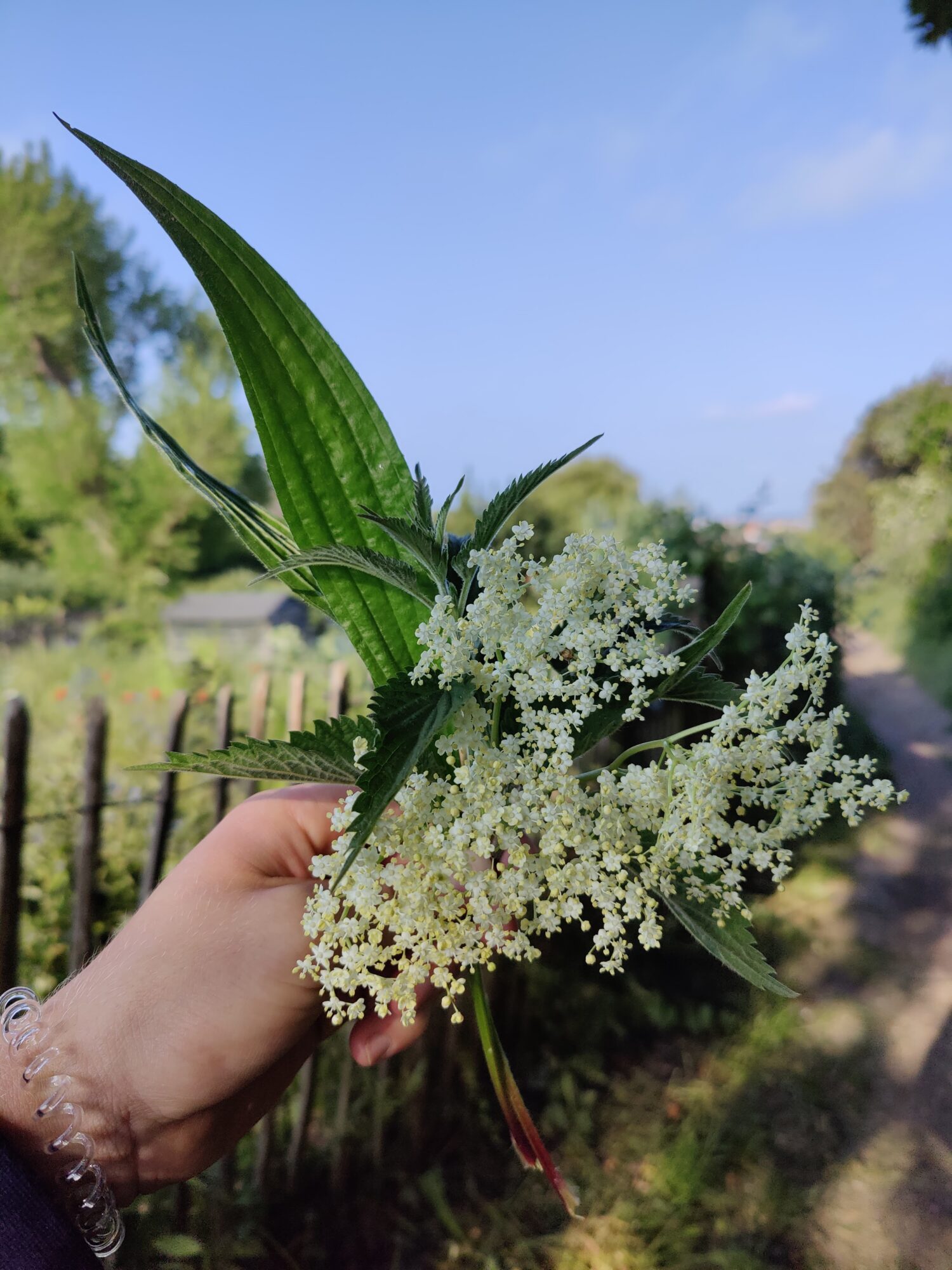
Garden Medicine: Our favourite garden cures
Written by Elliot Riley
The natural world is full of incredible plants which can nourish us, heal us, feed us, support us.
Whilst much of our understanding of plants and their uses has faded from common knowledge, there are plenty of resources which allow us to redevelop our relationship to them. It’s amazing how much we can do to support our health and bellies with the things growing around us; not to mention how easy it is, and how low the barriers to entry are. Whilst it may seem daunting, there are plenty of home cures that can be prepared safely and easily.
Working with herbal medicine is also an amazing way to develop a more intentional, reciprocal relationship with the natural world around us, as it encourages us to slow down, take closer notice of individual wild plants, and the living network we share with them.
It goes without saying that herbal or plant medicine can be taken to an extremely high level, which requires a huge deal of caution, intuition, knowledge and experience. But this collection I’ve curated here serves as a little launching point for remedies which are easy to make, relatively safe, and sourced from the plants which we find in our parks, streets and gardens.
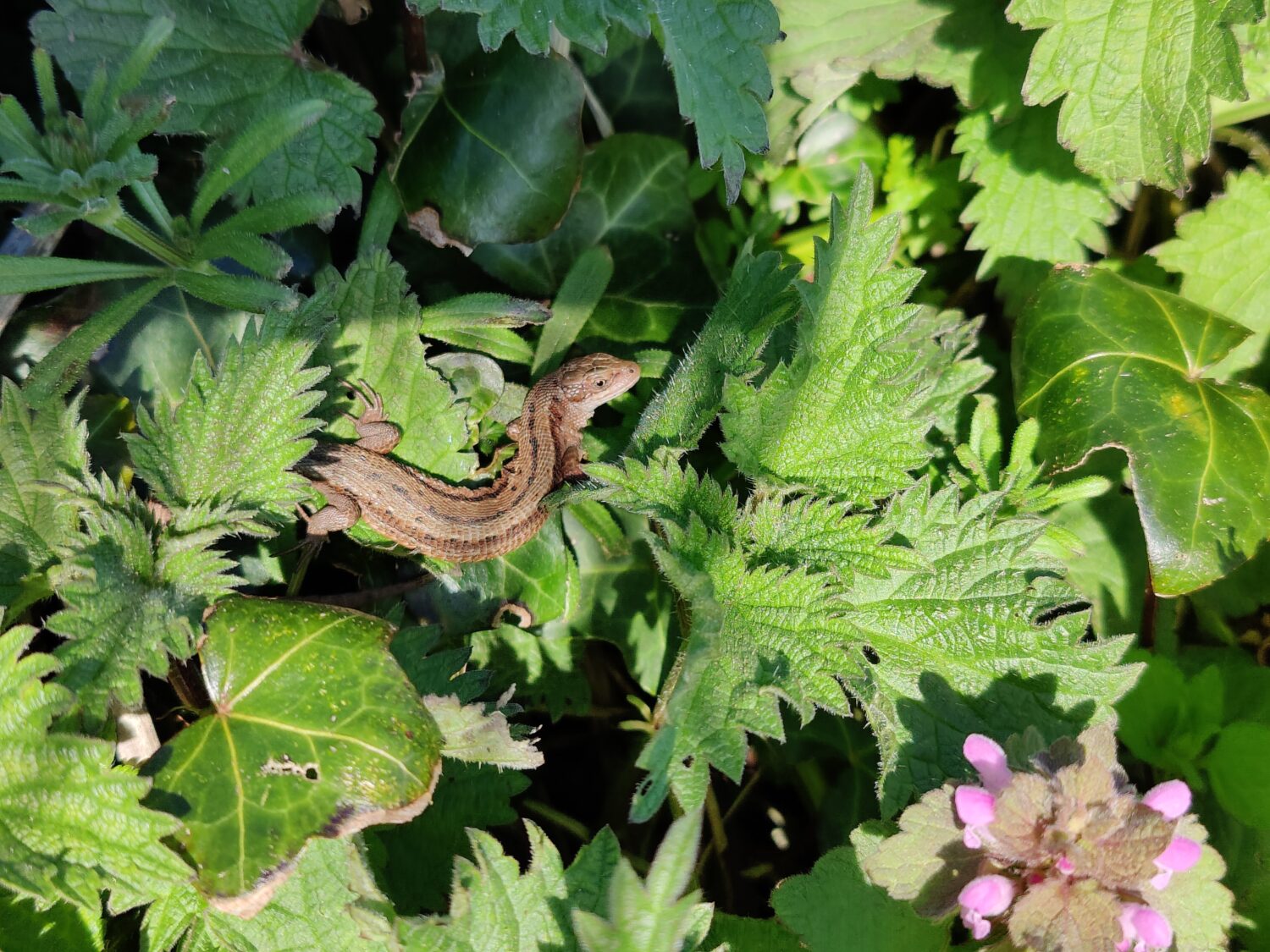
Why make our own herbal remedies?
There are plenty of reasons to start making our own herbal remedies.
Some argue that it’s better for you than conventional medicine. This may be true, but it’s not an argument I’ll wade into here. It’s certainly exciting that, for the large part, the process is free. Aside from the cost of some household staples, like vinegar and honey, these plants can all be found easily. As I mentioned, making herbal remedies can be a powerful way of fostering a deeper relationship with our local ecosystem. But most importantly, it’s immensely satisfying. There are few feelings as wonderful as sharing a remedy with somebody that has a profound impact on their life, knowing that you mixed it together with a little oil and some flowers growing wild in your lawn.
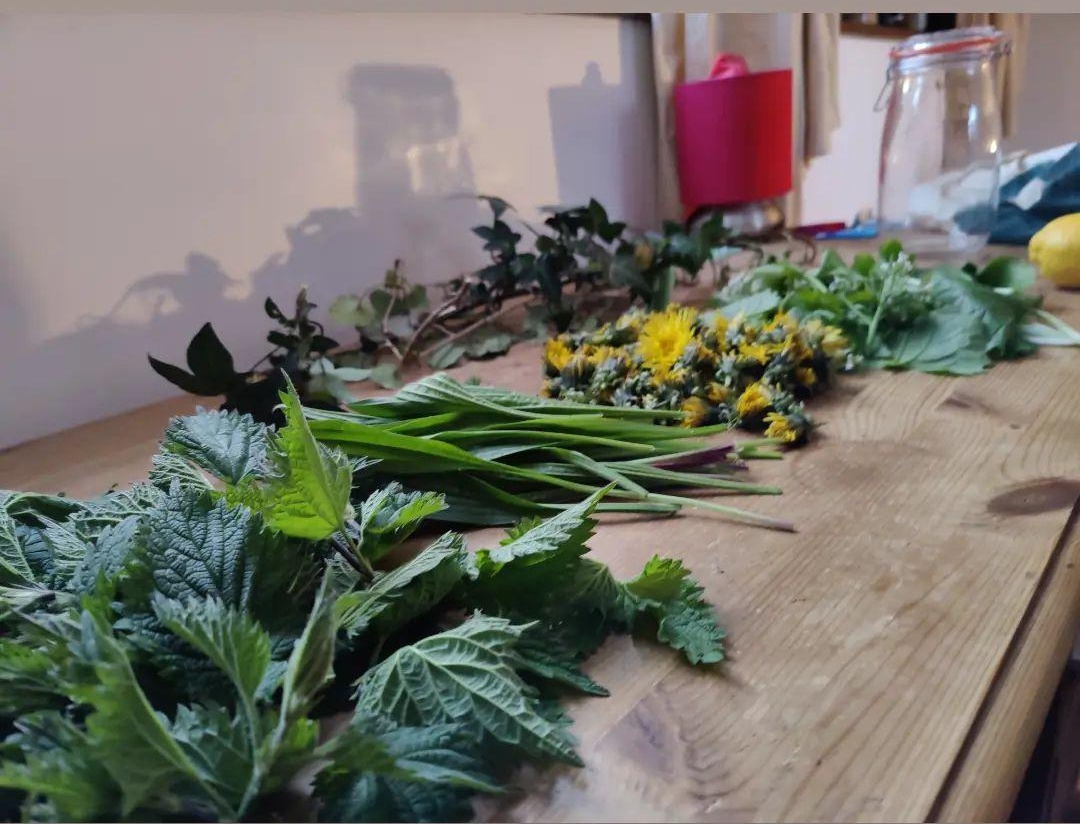
How to forage responsibly
Whilst the recipes I’ve chosen are quite low-risk, it’s still vitally important that we forage and make herbal remedies responsibly. Some of the most important things to bear in mind are:
- Never take more than a third of what you find in a given area
- Never take the first plant that you see – so avoid reaching for that first nettle unless you can see it’s growing in a patch.
- Try to be as intentional as possible when you pick plants to work with. Simply grabbing them and stuffing them in a bag will only reinforce the idea that nature is here to serve us. Take the time, as much as you can, to notice the subtle differences in shape and colour between individual plants that you pick – look closely for insects that can be shaken off, and if you like, express your gratitude to the plant, let it know why it’s being picked, and thank the patch for sharing with you.
- Be cautious about potential contaminants in the area. Whilst plants such as nettles and brambles flourish in wasteland, it’s worth being sensitive to what contaminants may be in the soil – sometimes the most powerful medicinal plants are also excellent at drawing toxins from the soil, as well as nutrients. It’s also worth considering whether plants are exposed to high levels of exhaust fumes – and the likelihood of them looking like a spot for dogs, or humans, to mark their territory.
- Whilst you’re starting out, you should triple check that you have identified plants correctly. The plants that I’ve included are mostly common household names – easy to identify, common to most people, and lacking in dangerous look-alikes. Nonetheless, it’s well worth triple checking with separate sources. To help you with this, I’ve included a resource list at the bottom, which contains several of my favourite websites, and the amazing books which have helped me to develop my confidence in foraging and making medicine.
- Please bear in mind that this is advice passed on by an amateur. These recipes have worked well for me, and I’ve never got ill. But full personal responsibility must be taken by each person trying these recipes – and as with anything you try for the first time, experiment with a small portion and gauge your reaction before consuming larger quantities.
With all this in mind – you’re ready to go!
Our favourite garden cures:
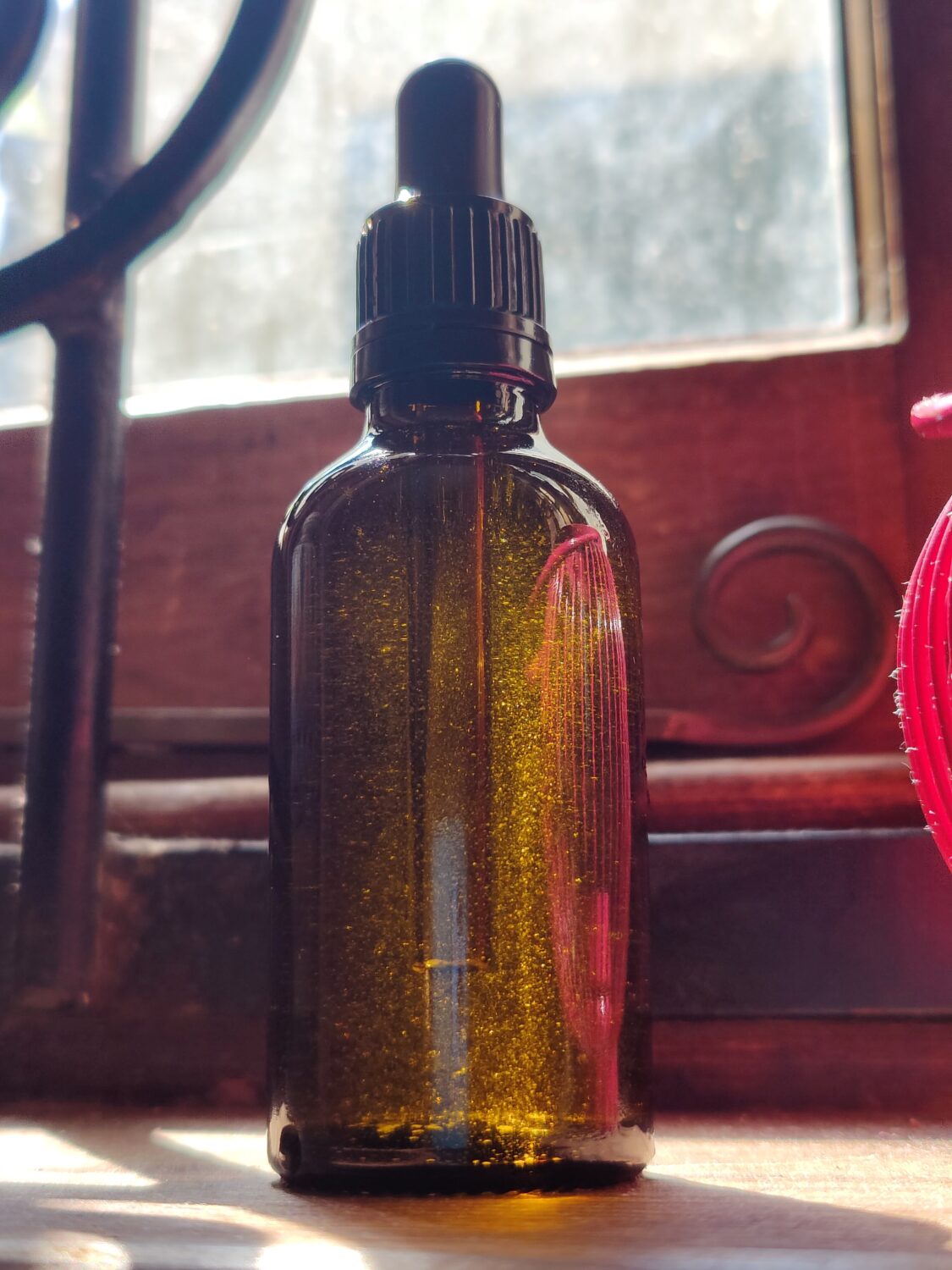
Self-Heal Oil
Self-heal oil is one of my favourite cures, and one that is more satisfying to use than most. It can be applied topically to treat achy muscles, cuts, and sores, and I’ve personally seen it heal a cold sore after three days, rather than the usual 9 days with a shop-bought cream.
The small purple flowers of self-heal (also known as heal-all, woundwort or prunella vulgaris) grow abundantly in grassy spaces throughout spring, and then reappear in late summer when the taller grasses die back down. Their tiny purple petals look like open mouths when viewed face-on, relating to their ability to help mouth ulcers and swollen glands, and from the side on, they look like small hooks, suggesting an efficacy for cuts.
This recipe, taken from the excellent book Hedgerow Medicine (1) is an easy favourite, and well worth making a litre batch of in spring. Once it’s ready, you can then share the mixture with friends and family to last the year.
- Make sure you know how to identify the self-heal flower, and then plan a walk that will take you through several green spaces where you know or think that they may grow.
- Bring one or two large jars with you on your walk. My personal favourite jars for this recipe are family size Mrs Elwood Pickle jars, but family Nutella jars, an industrial mayonnaise, or any large jar will do. It’s really not important – but you may find that working with herbal medicine turns you into something of a jar nerd.
- Over the course of your walk, fill your jar/s with self-heal flowers. You can pick the whole head, and some of the stalk. Bear in mind that these plants are particularly good at hiding little ants and stowaways, so it’s good to give each a little shake before dropping it in the jar.
- When your jars are full – or your legs are tired – return home, and fill the jars with olive oil. Either extra virgin or regular will do. You’ll want to stir the mixture as you pour your oil in to allow air to rise to the surface. Then once the oil is comfortably above the level of the self-heal, and you’ve allowed the last air bubbles to rise, you can top the jar with muslin or a cloth and a rubber band, then leave it on a sunny window sill to help the water evaporate.
- Over the next month, you should stir the mixture every few days, re-submerging the flowers below the oil if they’ve risen above.
- After a month, the mixture can be strained through a sieve or the muslin, and the oil funnelled into small dropper bottles. Dark brown or blue bottles are ideal to help protect the oil from sunlight! It’s then ready to be applied directly to cuts, aches and cold-sores – though be warned, the oil is very thick, so start with one or two drops, and apply more if needed.
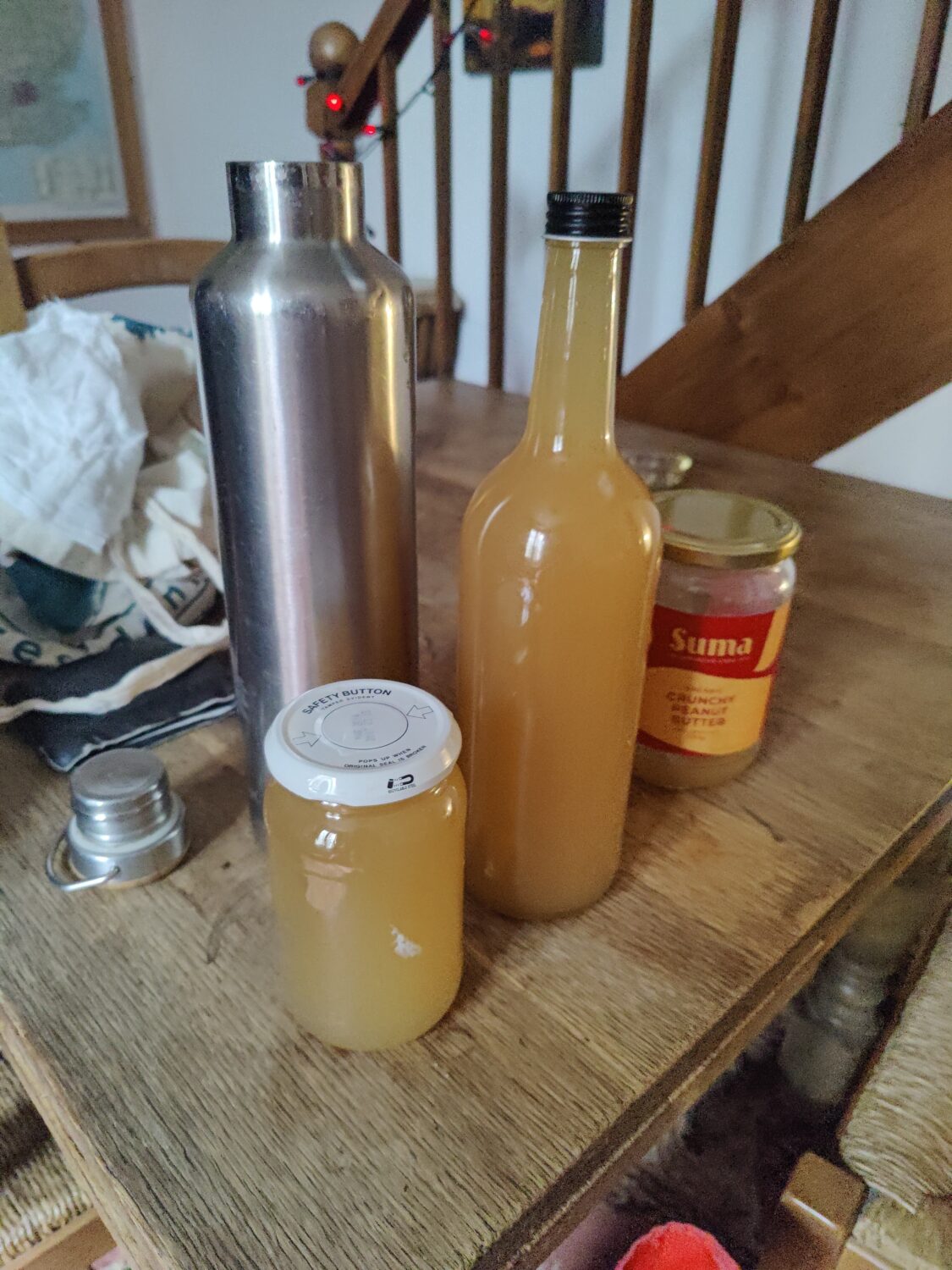
Herbal infused vinegar
How can something so delicious and so easy to make be so incredibly good for you? This is one of my favourite recipes for daily use, and is an excellent way of filling yourself with spring goodness after a heavy winter.
It combines the gut-friendly, immune boosting properties of apple cider vinegar with the vast vitamin dosage offered by nettles and dandelions, which are preserved for year-round consumption. Liberally splashed over a salad, it’s an easy, tasty way of getting a mouthwatering vitamin dose.
My personal favourite application of this vinegar is to mix it into a salad of grated carrots and beetroot, covered in seeds.
- Grab a basket or bag, pack a thermos of warm drink, and take a morning walk, collecting a large quantity of nettles and dandelions. The top 5 inches of nettle are best; they look like small angels, and come packed with the best of the nettles’ goodness. You can use all of the dandelion found above the surface – meaning leaves, stem and golden flower head, but for this recipe, I prioritise the freshest, most vibrant looking leaves.
- Once your bag is full, return home, and sterilise a large mason jar by boiling it in water.
- Chop or crush your nettles and dandelions, then place them in the bottom of the sterilised jar. This can then be filled with vinegar. There’s no need to be specific with your ratios, but the more greens, the better, provided they can be fully submerged in the vinegar. It’s also important that, if your lid is made of metal, you place a sheet of baking paper between the neck and lid of your jar to avoid corrosion.
- Put your mixture in a dark place, and give it a good mix regularly. A daily mix is ideal, but every couple of days is fine.
- After two weeks, the mixture can be strained through a sieve, or some muslin into a jug. From there, it can be poured directly into sterilised bottles; either to be shared, or kept all to yourself!
Oxymels
Despite the intimidating name, an oxymel is a very simple mixture – combining vinegar and honey with whatever goodies you want to infuse. I’ve included two recipes here, the first from the genius folks at Milkwood (2) , the second from Hedgerow Medicine. Both are outrageously tasty, outrageously good for you – and if you find a beautiful bottle to store them in, they can both act and look like a magical potion.
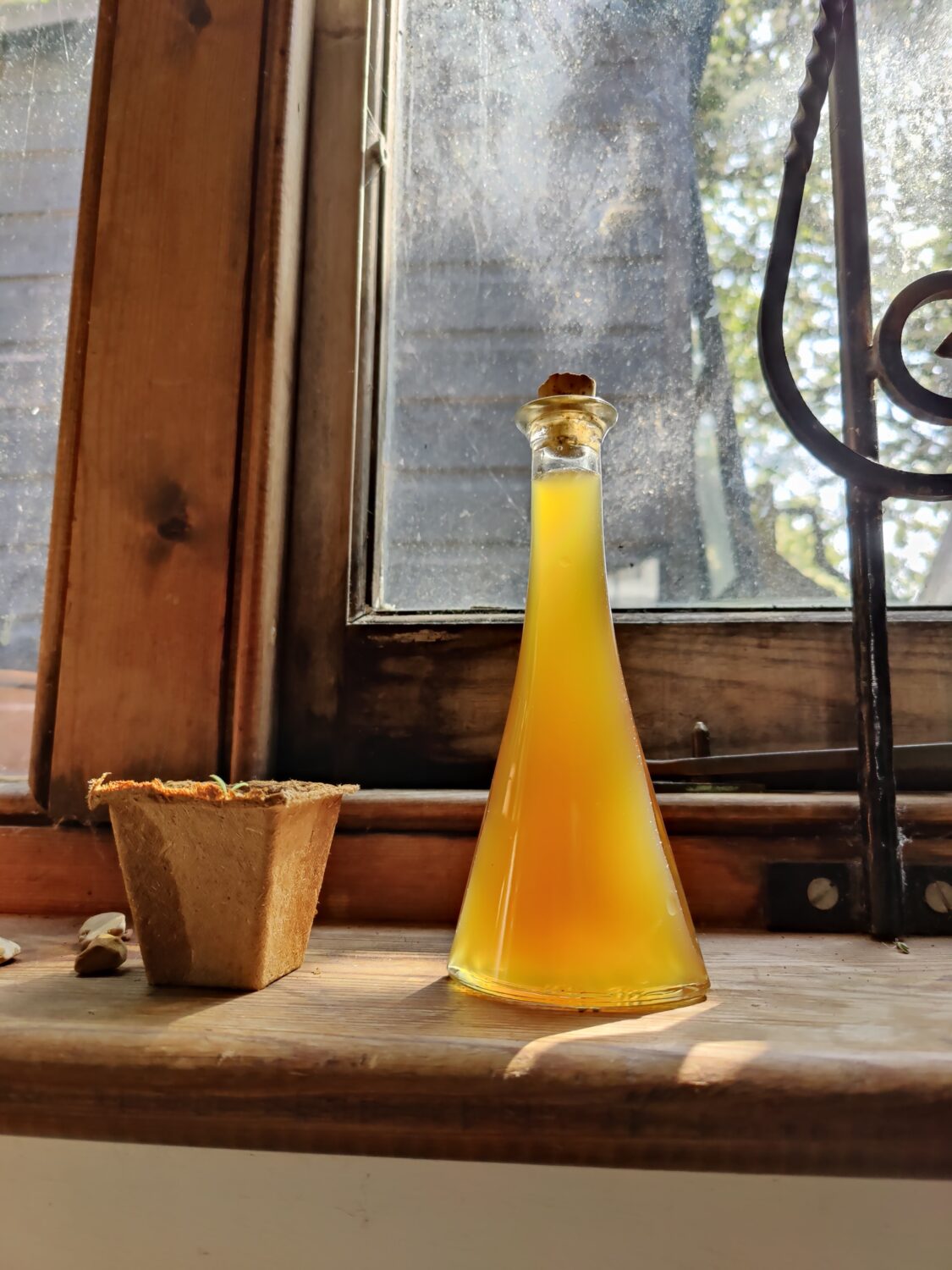
Olive Leaf Oxymel
It can be hard to find olive leaves growing in England, but this recipe is so outrageous that I believe it’s worth adding to the list. It’s a fantastic cure for a sore throat, and if you feel a cold settling it, a tablespoon before bed will leave you waking fresh and clear. The flavour verges on blasphemy, with the sharp warmth of the vinegar soothing and smoothing into a trickle of hot honey.
- Collect as many olive leaves as you can responsibly – this may mean asking a number of people who have small olive trees growing in pots if you can take 5 or 6 leaves. More is better, but I’ve made an amazing oxymel with as few as 30 leaves.
- Separate the leaves from their woody stems, then chop the leaves as finely as you can. Place these chopped leaves into a sterilised mason jar.
- Once all of your leaves are in the jar, half fill the jar with a vinegar of your choice. I like apple cider vinegar.
- Next, prepare your honey. Whilst a local, organic runny honey is best, any honey will serve the purpose. If your honey is too hard for easy mixing, you can place your honey jar in a water bath to soften it. Simply bring a saucepan of water to the boil, remove it from the heat, and place your closed jar of honey into the hot water. You can then stir the water to aid the honey’s softening process.
- When you have a nice runny honey, it can be added to your jar of leaves and vinegar, and mixed well. You can combine the mixture by shaking, rolling, or using a wooden spoon or chopsticks. If the jar is well sealed, you can also up-end it a few times for an exciting lava-lamp effect. If your jar has a metal lid, make sure to place some baking parchment between the lid and neck to prevent oxidisation.
- Leave your jar in a dark place for the next four weeks, giving it a daily shake.
- After a month, it’s ready to strain into a sterilised bottle and enjoy! Don’t forget – a beautiful bottle here can make this into something truly incredible to behold.
Blackberry Oxymel
If you don’t have a steady supply of olive leaves, the blackberry oxymel is an excellent alternative – and looks wonderful. Prepared at the start of autumn, it’s an excellent option for fighting off winter colds. According to the authors of Hedgerow Medicine, it’s a great booster for overall health, supports against colds, and soothes sore throats.
I suggest buying your vinegar and honey in advance; as soon as the first blackberries begin to ripen. That way, as soon as you notice a fresh wave of ripe berries, you’re ready to oxymel up. I tend to prepare a litre of white wine vinegar and 500g of honey. The recipe as laid out is set to work with those ratios.
- Once a large number of ripe blackberries are visible, collect enough to fill a litre container. You want to be sure that the heel of each blackberry, where it connects to the plant, is green or white rather than dark.
- Take these blackberries home, pour them into a ceramic or glass bowl, and submerge in white wine vinegar. Cover the bowl with a muslin cloth, and leave the mixture for two days.
- After two days, crush the blackberries, then strain the mixture through the muslin into a jug, before pouring the strained liquid into a saucepan.
- Add half the volume of honey to the saucepan, (approx 500g based on these proportions) to the saucepan, then gently heat until the honey is melted.
- Once the honey is melted, give the mixture a good stir, then boil for 5 minutes. Bring the mixture off the heat, and once it’s cool, it’ll be ready to funnel into a sterilised bottle.
- Keep your bottle in a dark place, and mix a tablespoon of the oxymel with hot water for a delicious drink, or before bed at the first sign of a cold.
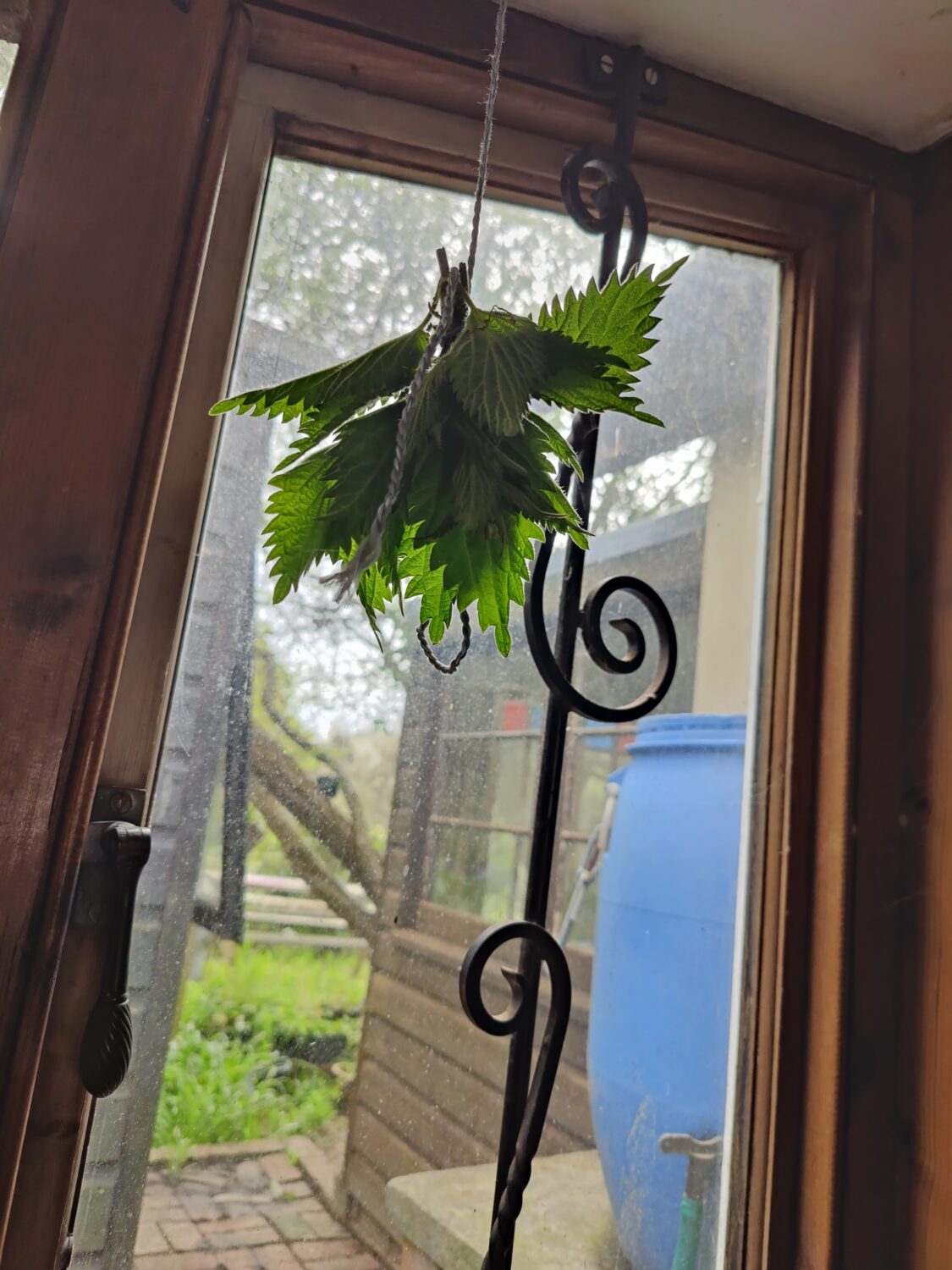
Nettle Tea
Nettle tea is a true seasonal delight. Everything about it thrills me; picking the nettle tops with their angel-like leaves, the tickle and gentle sting I get from touching the leaves, the exceptional flavour of fresh tea, and the way they look when hanging and drying in a bunch.
Not only do nettles look amazing, taste amazing, and contain a plethora of vitamins and minerals – they are also my go to anti-histamine. Drinking three cups a day from the start of their growing season in spring to when they go to seed in early summer has transformed my usual summer-long affliction with hayfever, in which I struggle to breathe and see, into one month of regular sneezes, and two months of absolute relief! If, like me, allergies take the fun out of your summer, this recipe is a must.
- For one cup, pick one or two five-inch sections from the top of a nettle (this is where you’ll see the angel shape).
- Boil a cup’s worth of water, then take off the heat.
- Add your nettles to the water, give them a gentle blow across the surface to ensure the leaves have all made contact with the hot water, then let them infuse for 10 minutes.
- By tripling your quantities, you can also make three cups – a full day’s dosage – then strain the leaves out, and pour the tea into a thermos to be drunk in thirds through the day.
- You can also pick larger bunches of nettle tops, and allow them to dry for use later in the season. Simply collect your nettles, tie them around their stems in a bunch with string, and hang in a window. Once the leaves are brittle enough to crumble, you can place them in a dry, clean jar. For extra security, you may wish to add a (CLOSED) silica gel pack.
- Another note on nettles – you can pick them with negligible stings by gentle squeezing the stems, then sharply pulling up. It’s also worth noting that, if you can experience stings purely as sensation, rather than associating with pain, they have an amazing down-regulating, calming effect which supports the anti-histamine well!
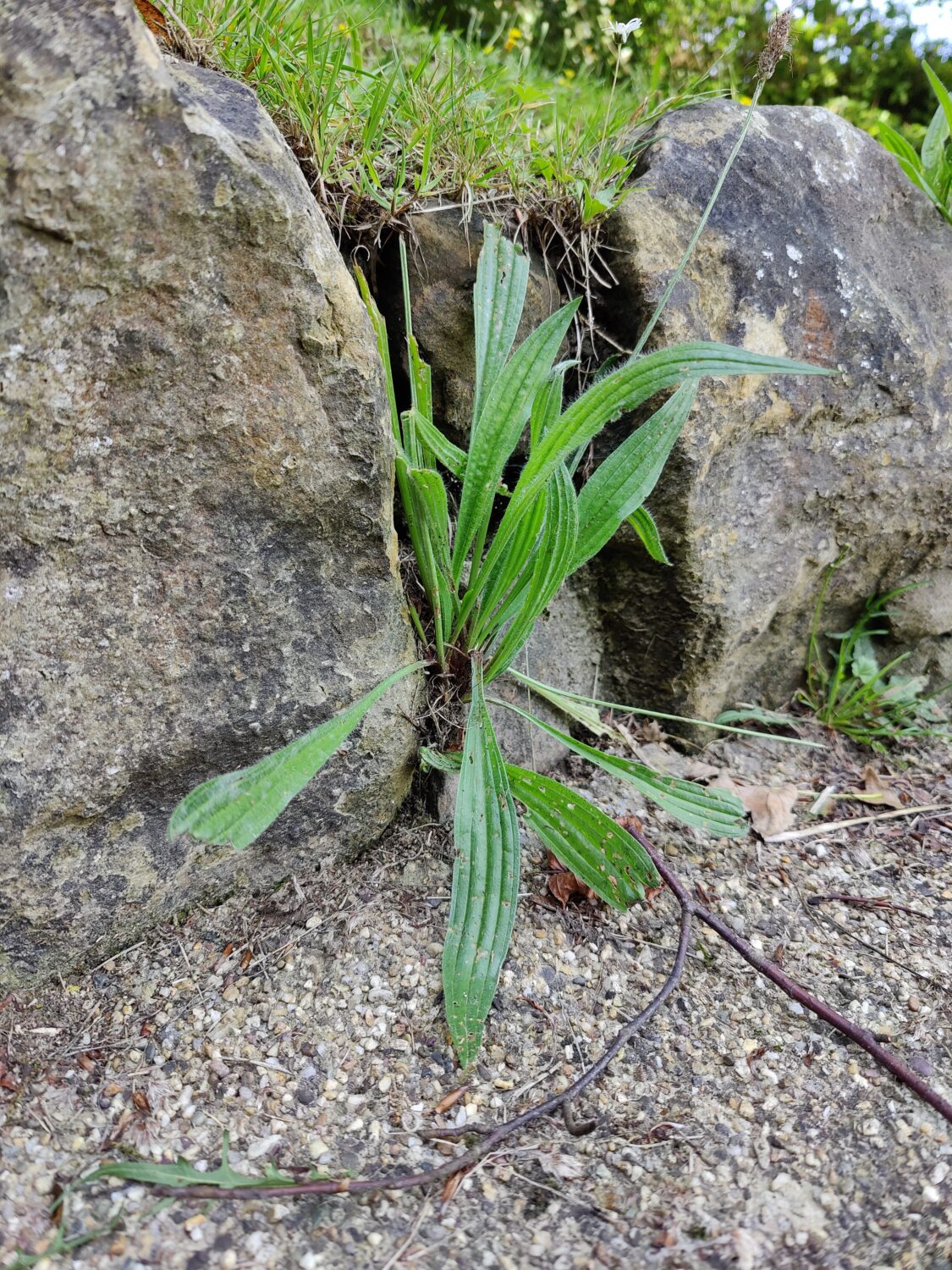
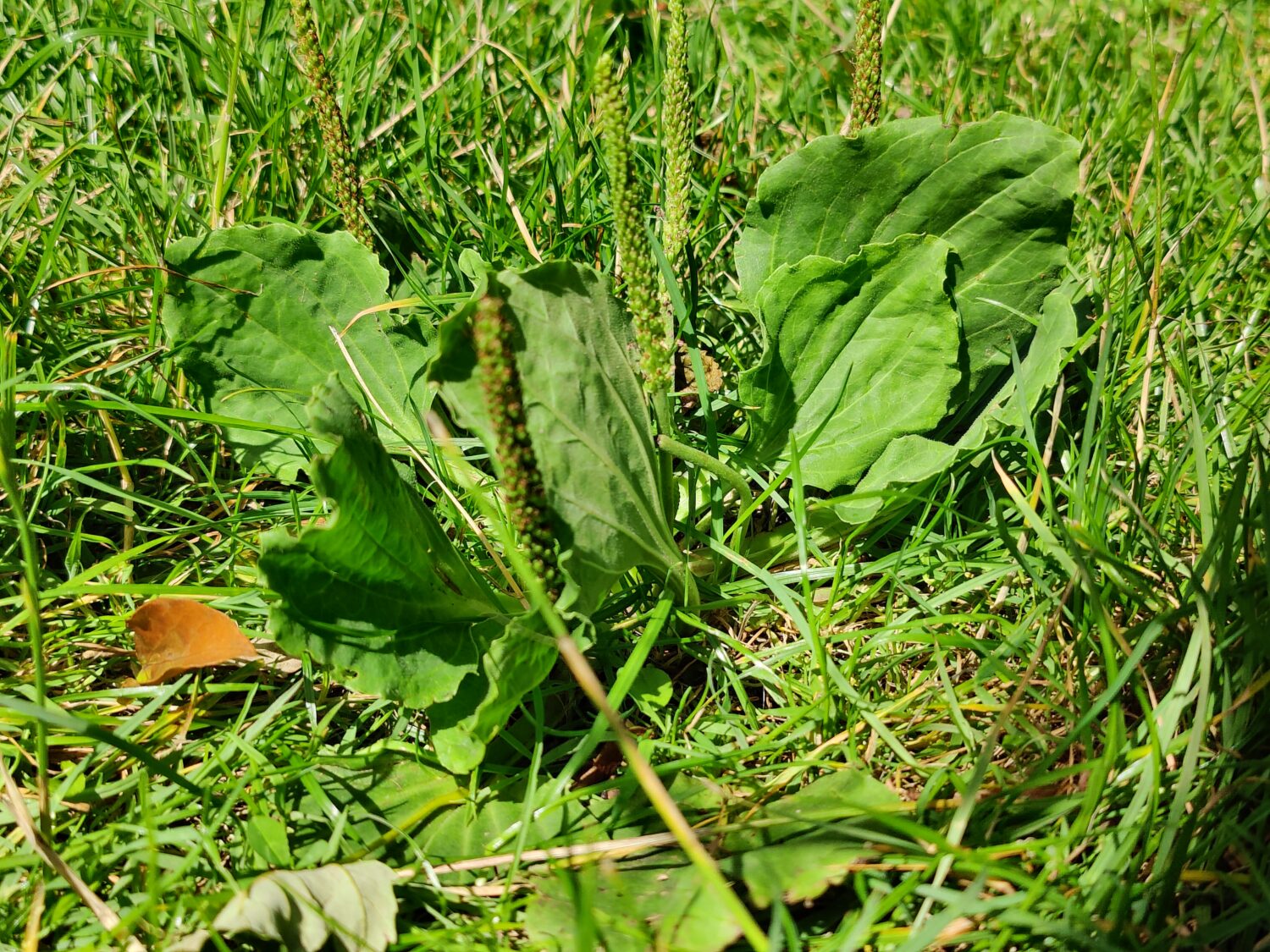
Plantain Tea
Plantain (no relation) or ribwort is another amazing anti-histamine, that is well worth familiarising yourself with. Not only do they remain abundant when the nettles have gone to seed, but they are also an amazing first-aid plant in other contexts. When you chew them up and spit them out, the saliva-soaked plant juices (otherwise known as a poultice if you want to be civilised) are amazingly effective at calming cuts, burns and stings – far more so than dock leaf.
There are two main types of plantain (broad leaf and narrow leaf), which are widely available – though from my experience, neither dry as well as nettle.
- For one cup, pick two to three plantain leaves
- Boil water, remove from the heat, and add leaves, allowing them to infuse for 10 minutes. Then either drink as they are, or remove the leaves for all-day storage.
These recipes should offer plenty for you to start with – but working with plants and herbal remedies is a never ending journey! So get out into your garden, see what you can find, and don’t forget to share your goodies!
Sources, and other reading
Books:
- Hedgerow Medicine: Harvest and Make Your Own Herbal Remedies: Julie Bruton-Seal & Matthew Seal
- Forage: Wild Plants to Gather, Cook and Eat: Liz Knight
- The Forager’s Calendar: A Seasonal Guide to Nature’s Wild Harvests: John Wright
Websites